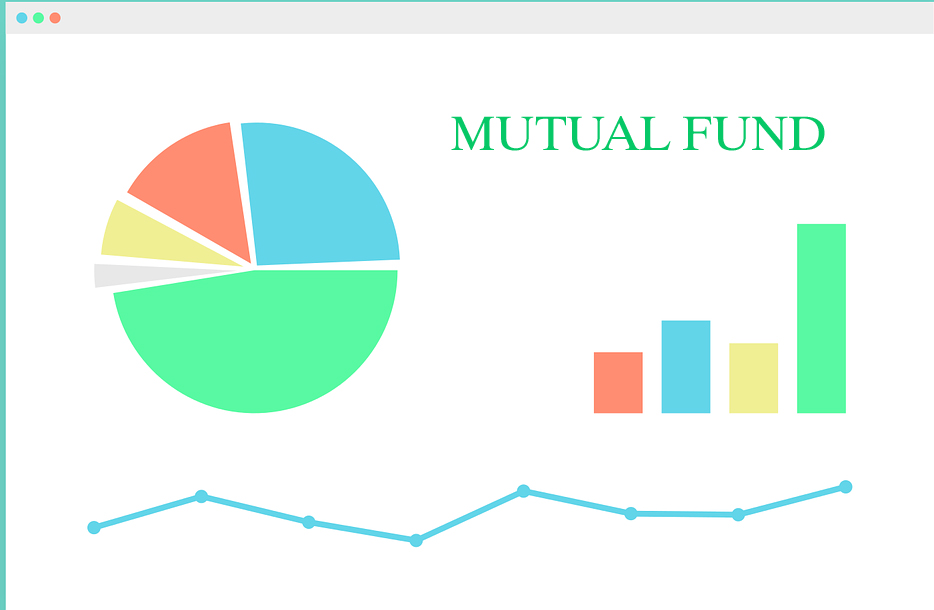When you talk about investment with anybody then the conversation is incomplete without discussing mutual funds. Even we in our article have mentioned a couple of times about how investing in mutual funds can be beneficial to your plans of building wealth for yourself. But most of us are confused about how to choose a mutual fund to invest in. There are so many mutual funds out there to choose from. So here we are to help you out with this. We bring to you the factors you should consider which will help you to select Mutual Funds for investment in India.

First of all, we need to understand that there is no such thing as the best mutual fund in which everyone can invest in fulfilling their financial goals. If that would have been the case then we would have straight away written the name of that mutual fund. The best mutual fund will vary from person to person. So let’s dive right into the factors to select mutual funds for investment in India –
1. Investment objective
Clearly define your investment objective. Your objective can be to quickly earn money and move out. It can be investing for having a source of income to investing for your retirement. Based upon your investing objective following are the types of mutual funds you should invest in –

Types of Mutual Funds based on investment objective
Growth funds (For Capital Appreciation)
These are the mutual funds you should invest in if your objective is capital appreciation. These funds invest in the stocks of the companies which are expected to grow at a rate higher than the market. As the returns are high so is the risk. You should invest in these funds for medium to long duration i.e. 3-5 yrs. The short-term capital gains (if the mutual fund held for less than or equal to 36 months) are taxed at 15% and the long-term capital gains (if the mutual fund held for more than 36 months) are taxed at 10%.
Example – Axis Bluechip funds- Growth, Mirae Asset Hybrid-Equity Fund, etc.
Income funds (For creating a source of income)
You should go for such funds if you want to create a source of income for yourself. These mutual funds invest in the stocks of the companies that pay dividends as per the profit of the companies in that mutual fund. The frequency of dividend payout may be monthly or quarterly or even half-yearly depending on the fund you invest in.
Example – Kotak Corporate Bond Fund Standard-Dividend Monthly, Aditya Birla Sun Life Corporate Bond Fund-Dividend Monthly, pay monthly dividends while HDFC Income Fund-Dividend Quarterly, SBI Magnum Income Fund-Dividend Quarterly, pay dividend quarterly.
You can compare two dividend-paying mutual funds through their dividend yields. The dividend yield is calculated by dividing the annual dividend payout by the share price and multiplying the ratio by 100. For example, a fund pays INR 1 as a quarterly dividend on a share of INR 50 then its dividend yield is 8%.
We, at WealthDrift, recommend you to re-invest the dividend you get instead of spending them.
Tax-Saving Funds (ELSS) (For tax saving and capital appreciation)
ELSS stands for Equity Linked Saving Scheme. These are the mutual funds that are used as an investment tool for capital appreciation and tax saving at the same time. The funds invest majorly in equities but their significant portion is also invested in debt instruments. Their tax exemption can be availed under section 80C.
But these funds have a lock-in period of 3 years which is the least among the investments covered under Section 80C. The returns are high but so is the risk associated with such funds. You can invest as much as you want as there is no capping on investment. The long-term gains are taxed at only 10% which is good.
Example: Quant Tax Plan, Axis long term equity fund, etc.
Pension Funds (For retirement purpose)
These funds are chosen when one is planning for one’s retirement. The investment is done with long-term profits in mind. These funds provide regular returns (medium returns) till the retirement of the investors. These funds invest with a balance in equity and debt instruments. This counters the risk involved with the equities and the low risk of the debt, making it a great retirement tool. The returns from these funds can be taken in a lump sum or as a pension or a combination of the two.
The investment made in these funds is tax exempted under Section 80CCC up to a max amount of INR 1.5 Lakhs. However, the amount you withdraw at retirement is taxable at the prevailing rate.
Example – HDFC Retirement Savings Fund-Hybrid-Equity Plan, Tata Retirement Savings Fund-Progressive Plan, etc.
Overnight Funds (For emergency fund setup)
These are highly liquid funds that you can invest in if you want to set up your emergency or medical fund. These types of funds mature overnight making them highly liquid. Though the returns are not very high since the purpose is to set up a medical or an emergency fund, so average returns are acceptable. The risk associated with these funds is minimum so you can safely park your medical fund here.
Example – SBI overnight fund, HDFC overnight fund
2. Time Period
It is time for which you want/can keep your money invested in a certain mutual fund. It can vary from a single night to decades. And it will decide whether you will invest in liquid funds or equity funds or any other type of mutual fund. Depending upon the time period following are the mutual funds you can go for –

Overnight funds
These are highly liquid funds that can be withdrawn the next night as already explained above. These funds invest in debt or money market securities that mature in a single day. Every day the assets of the funds get renewed. It is the safest among the debt funds with an expense ratio (*explained below) less than 1%.
Ultra Short term funds
For 15-90 days. These types of funds do not have any lock-in period. These funds invest their money in debt securities like treasury bills, certificates of deposits, etc. that mature within 91 days. Such funds can be liquidated within 24 hrs on a business day. These funds can act as an alternative to the savings bank account. It offers 6-9% returns.
Example – Aditya Birla Sun Life Money Manager Fund Regular Plan-Growth, Kotak Money Market Growth, etc.
Short term funds 91 days to 1 year
These mutual funds invest in bonds/debts. Debts are given to companies that have a proven record of paying back the loans. Therefore these funds are less risky. It is idle for the money you won’t need for 1 year.
Example – L&T Short Term Bond Fund–Growth, HDFC Short Term Debt Fund–Growth etc.
Medium Duration funds 1-3 years
These funds invest in the debt and money market securities whose Macauly duration (Number of years you should maintain the fund until the present value of cash flow basically the profit equals the price paid for the fund). The average returns vary between 7-9%.
Example — SBI Magnum Medium Duration Fund, HDFC Medium Term Debt Fund etc.
Long term duration
More than 3 years
These mutual funds invest in the equities of the companies. Such type of mutual funds has excellent potential to give high returns. However, due to the long time horizon, these funds come with a risk that provides returns based upon the market conditions and hence the return can even vary drastically.
Example – Axis Midcap Fund, ICICI prudential technology fund, etc.
You can also read our article on “Top 10 ways to build Passive Income”.
3. Risk appetite
It is the risk you are willing to take with your money. It is always said that higher the risk, higher the reward but it also means higher will be the loss if it does not perform. So depending upon your risk appetite you can choose from the mutual funds mentioned below –

Low risk
These funds come with higher chances of assured returns. These funds invest in safer options like government bonds in infrastructure, energy sectors, etc. You can use these funds to gain confidence in investing. These funds offer moderate but stable returns. These are generally liquid funds. Gilt funds (funds that invest at least 80% of total asset in government securities) is an example of low-risk funds.
Example – SBI Magnum Glit Fund, HDFC Corporate Bond Fund, etc
Medium risk
These funds invest in MIP (Monthly Income Plan) funds, arbitrage funds (earns a profit by buying the securities from one market which is a cash market, and selling to another market which is a future market), etc. It can generate good returns at moderate risk therefore can be used as an investment to build wealth over a longer period of time.
Example – SBI Magnum Constant Maturity Fund Direct-Growth, Kotak Dynamic Bond Fund Direct-Growth, etc.
High risk
These funds invest in equities and equity-oriented securities in a particular sector. Invest in these funds with your surplus money and be ready to bear the loss in case it happens. Even though the risks associated with these funds are high but they also offer higher returns. Inverse mutual fund (utilizes futures contracts to earn profits) is an example of a high-risk fund.
Example – Kotak Asset Allocator Fund, SBI Small Cap fund, etc.
4. The factors to select the best mutual fund after deciding the type –
Past performance

Check for the past record of the fund. Look whether the fund performance was in line with the market trend; check the turnover ratio (average of all the transactions divided by the total holdings) of the fund. The turnover ratio should be low as it might lead to some transaction fees charged to you. Also, some tax-related issues can also occur.
Although past performance is not a conclusive factor to decide upon the mutual fund, however, it can help you get a fair idea about the Fund Manager and how the fund has performed.
Charges to be paid by you
Expense ratio – It is the annual money that the mutual fund company charges from you to manage your portfolio. It is basically expressed as the percentage of the money you have invested. For example, if the expense ratio is 1% and you have invested INR 1,000/- then you will be charged INR 10/- for managing your investment. Check this percentage as it decreases your net returns from the mutual fund.
SEBI has limited the Expense ratio under Section 52 of SEBI mutual fund regulation. It is 2.5% for the first INR 100 crore of average weekly total net assets, 2.25% for the next INR 300 crore, 2% for the next INR 300 crore, and 1.75% for the rest of the AUM (Asset Under Management). The limit for debt funds is 2.25%.
Loads
Front end load is the fee you pay at the time of initial investment when you buy shares in the mutual fund.
Back end load fee is what you pay when you sell the shares. It is applied generally when you sell the share before the decided time.
It is important to understand the different types of charges associated with an investment as these charges reduce your net return.
Downside protection
Check whether the fund has downside protection. If the fund in the past has given returns of 20% in a year followed by -30% the next year then it means that the fund lacks downside protection. Do not go for such funds. The fund manager must manage to protect the downfall of a fund by using any instrument.
You can also read our article to strengthen your basics of the stock market. Click here to read
So readers we hope that we have explained in a simple manner how to select mutual funds for investment in India for yourself. If you still want us to explain anything in detail then feel free to contact us. Do share this article, if you liked what you read, among your dear ones and help them out too.
Want us to write about something specific? Then, please write us at writeus@wealthdrift.com



